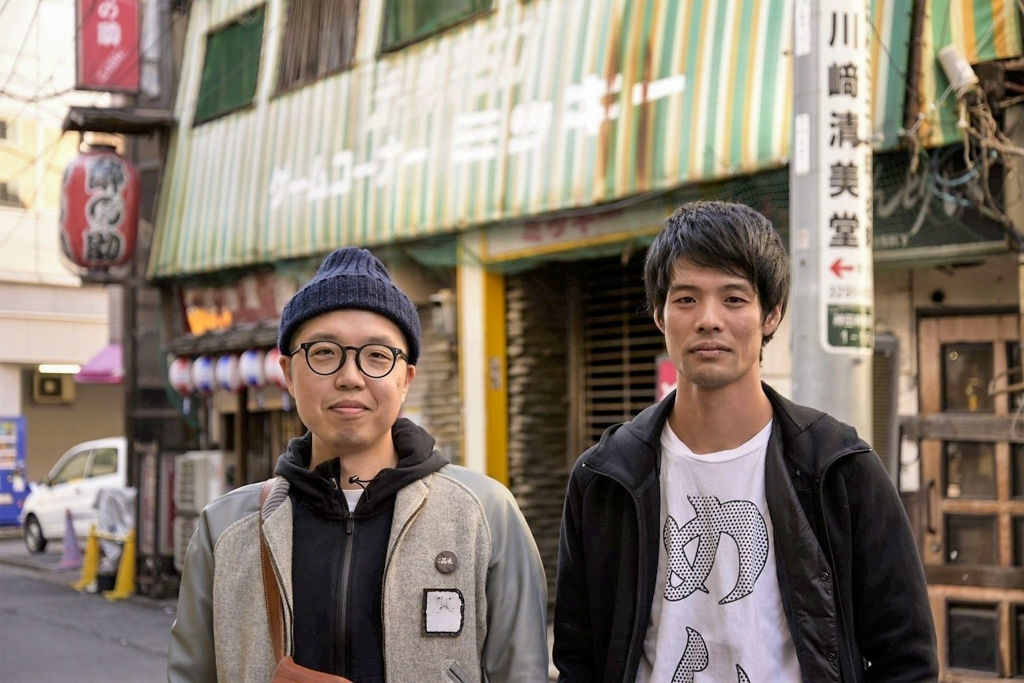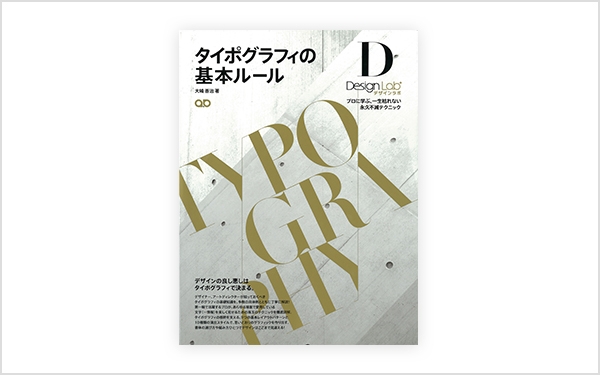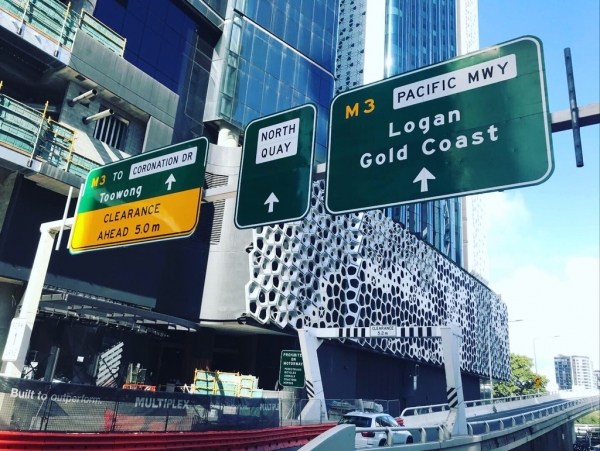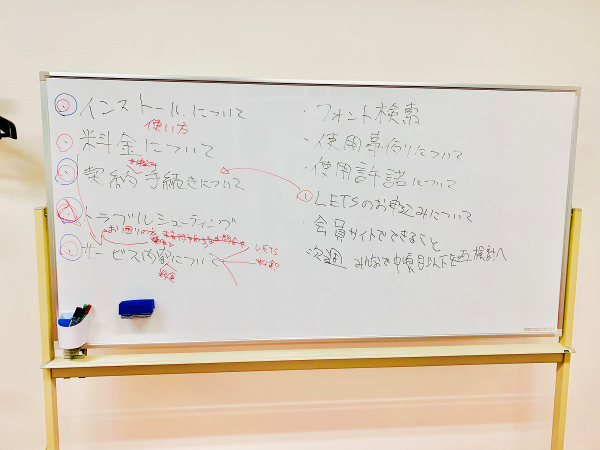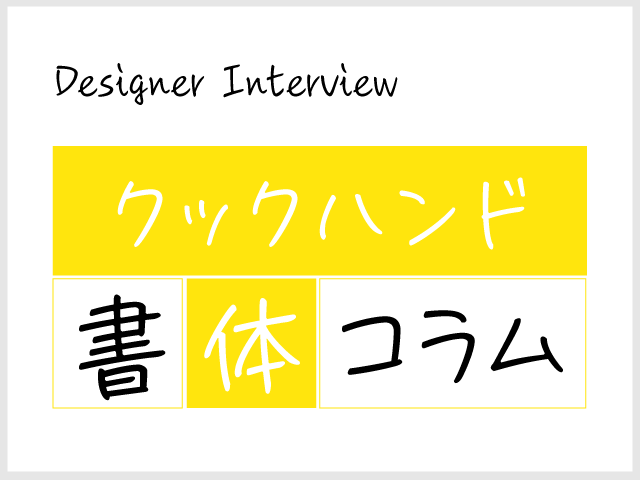こんにちは、営業部・安藤です。
まずは、11/16(土)~17(日)の2日間に渡って渋谷キャストで開催された「もじFes.」にご来場頂いた皆様方、ありがとうございました!
「もじを楽しむナイスな2日間」をテーマにしたお祭りでしたが、事前の想定を遥かに上回る来場者数に驚くと共に、お客様に対して文字との新しい向き合い方、新しい体験を提供できたことは本当に良かったと感じています。
その「もじFes.」会場で、異彩を放っていた「のらもじ発見プロジェクト」。
古い町並みには、洗練されていないけれど個性的で味のある文字がたくさんあります。このプロジェクトは、そんなステキな文字たちを「のらもじ」と名付け、それを発見→分析→フォント化を進めていく活動です。
「のらもじ発見プロジェクト」公式サイトより
彼らのトークセッション&ワークショップは、イベント全体を通じて来場者が最も多く大好評でした。「フォントを巡る冒険」第6回は、そんな「のらもじ発見プロジェクト」を運営する下浜臨太郎さん、西村斉輝さん、若岡伸也さんにお話を伺いました。
今回は、オンラインのビデオチャットツールを活用して、計5拠点(!)を繋いでの取材となりました。弊社の取材を終えた後も直ぐにNHKの取材が入るなど、文字にまつわるユニークな活動をされている彼らのお話、是非お楽しみください!
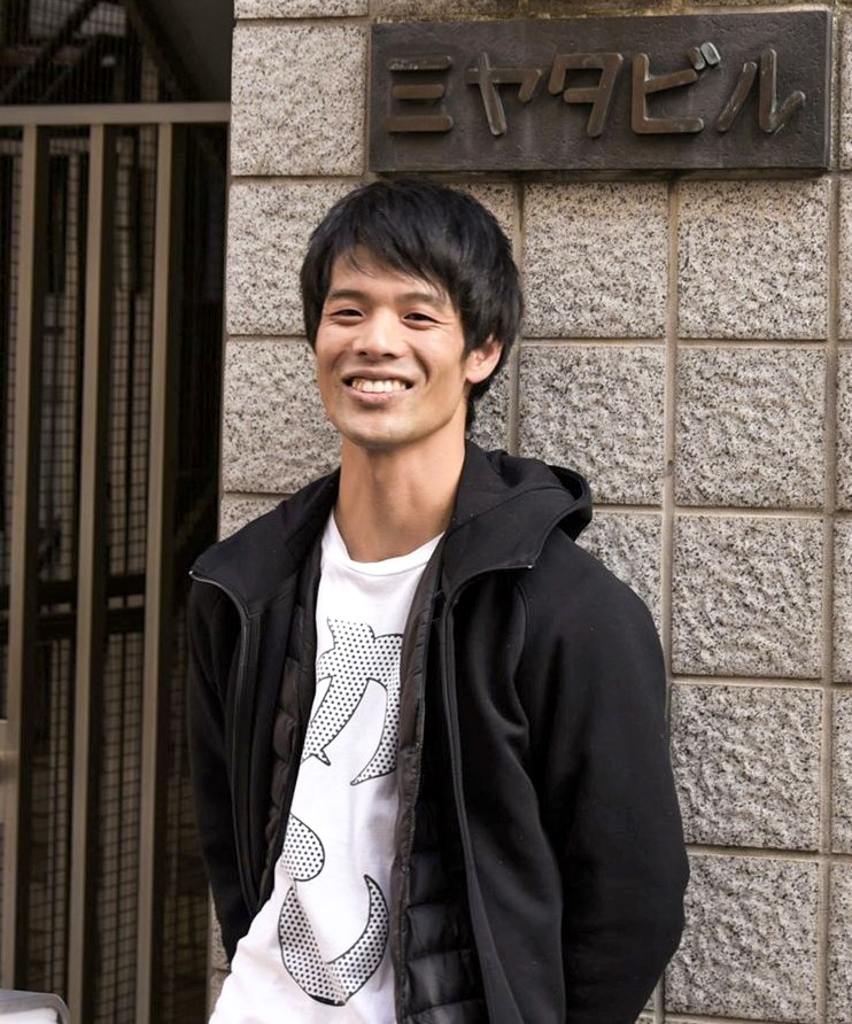
下浜 臨太郎(しもはま りんたろう)
1983年東京都生まれ。金沢美術工芸大学 視覚デザイン専攻卒。グラフィックデザイナー。ポスター、新聞広告、パッケージ、Webサイト、スマートフォンアプリ、展示空間など幅広くデザインに携わる。レコードレーベル「INDUSTRIAL JP」の企画運営、21_21 DESIGN SIGHTでの展覧会や地方芸術祭への出品など、独自のプロジェクトを積極的に行う。
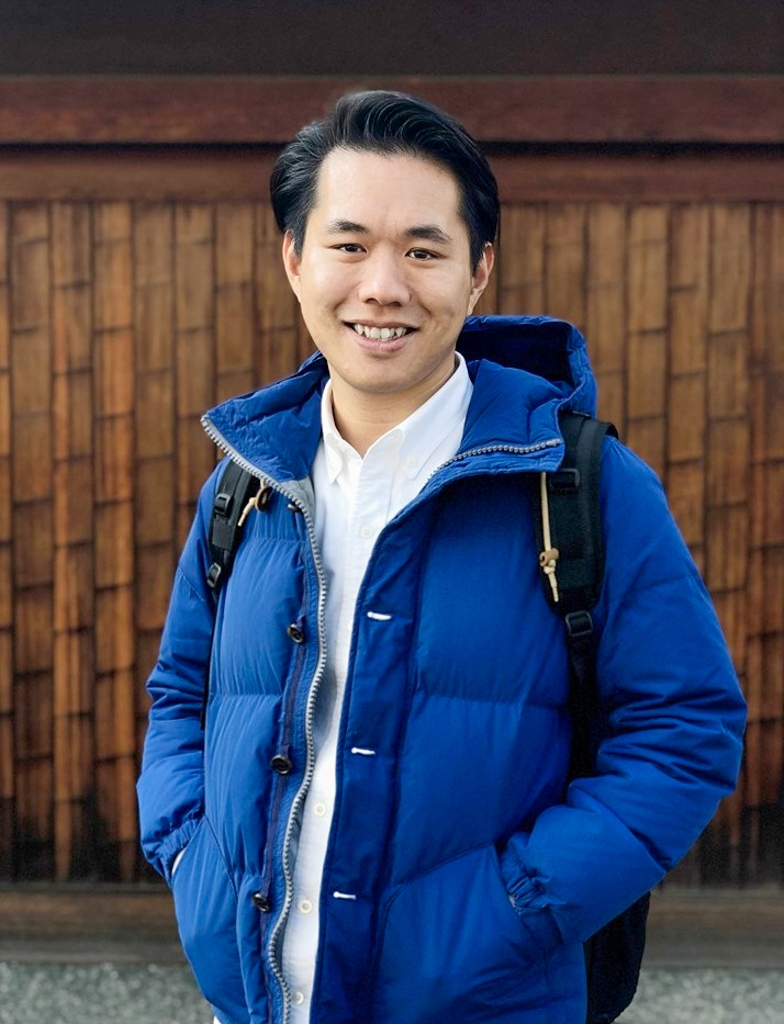
西村 斉輝(にしむら なおき)
1984年兵庫県生まれ。名古屋育ち。高校卒業後、吉本興業のタレント養成所NSC大阪校に入るも、その後紆余曲折を経て、2007年多摩美術大学グラフィックデザイン学科に入学。2011年、中村勇吾氏率いるデザインスタジオtha ltd. に入社。ウェブや映像のデザインやプログラミングを担当。現在は京都でデザインの修行中。
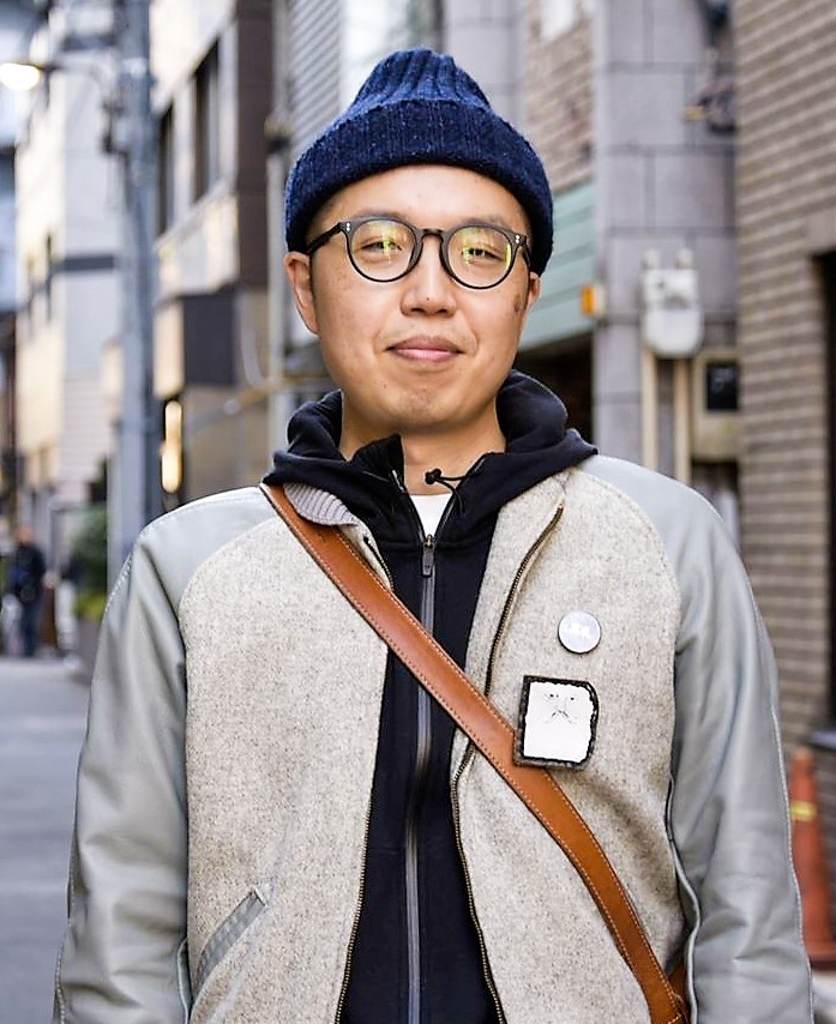
若岡 伸也(わかおか しんや)
1982年石川県生まれ。金沢美術工芸大学 視覚デザイン専攻卒。広告代理店、デザイン事務所勤務を経て独立。畑をしながらデザインの仕事をしたいと考えて、山梨に移住。株式会社トンボロデザイン設立。学生の頃から古い看板を写真に撮って採集・鑑賞するのが趣味。
「整えすぎてないか?」という感覚を大切に
―― 先日の「もじFes.」では大変お世話になりました。今日は「のらもじ発見プロジェクト」について詳しくお話を聞けるということでワクワクしてます!それでは、プロジェクト開始の経緯についてまずは教えてください。
若岡:僕が根っからの看板好きで、看板の写真を沢山撮りためていたんですけど、これを誰かに自慢したいと思って「カンバンマン」というブログを2010年にスタートしました。同じ大学の同じ専攻だった下浜がそのブログを見たことがきっかけです。
下浜:経年変化して味が出てきた看板を、古道具を愛でるような感覚で注目してること自体が面白いなと思いました。看板を愛でることからさらに広げられそうな気がして、若岡、西村のふたりに声を掛けて動き始めたのが2012年頃ですね。主にインターネットで活動しようと考えてました。
―― 西村さんは、このプロジェクトにどのように関わり始めたんですか?
西村:僕は2011年に美大のグラフィックデザイン学科を卒業しているんですけど、大学の卒業制作ではユーザが投稿した顔(face)の写真からタイプフェイスが生成されるウェブサービスを作りました。僕は、若岡や下浜のように文字に対してぬくもりを感じるとかはあまりなく、フォントはデジタルなデータとして接してきました(笑)。そのような経験を経てSNSで下浜と知り合い、この活動に参加することになりました。
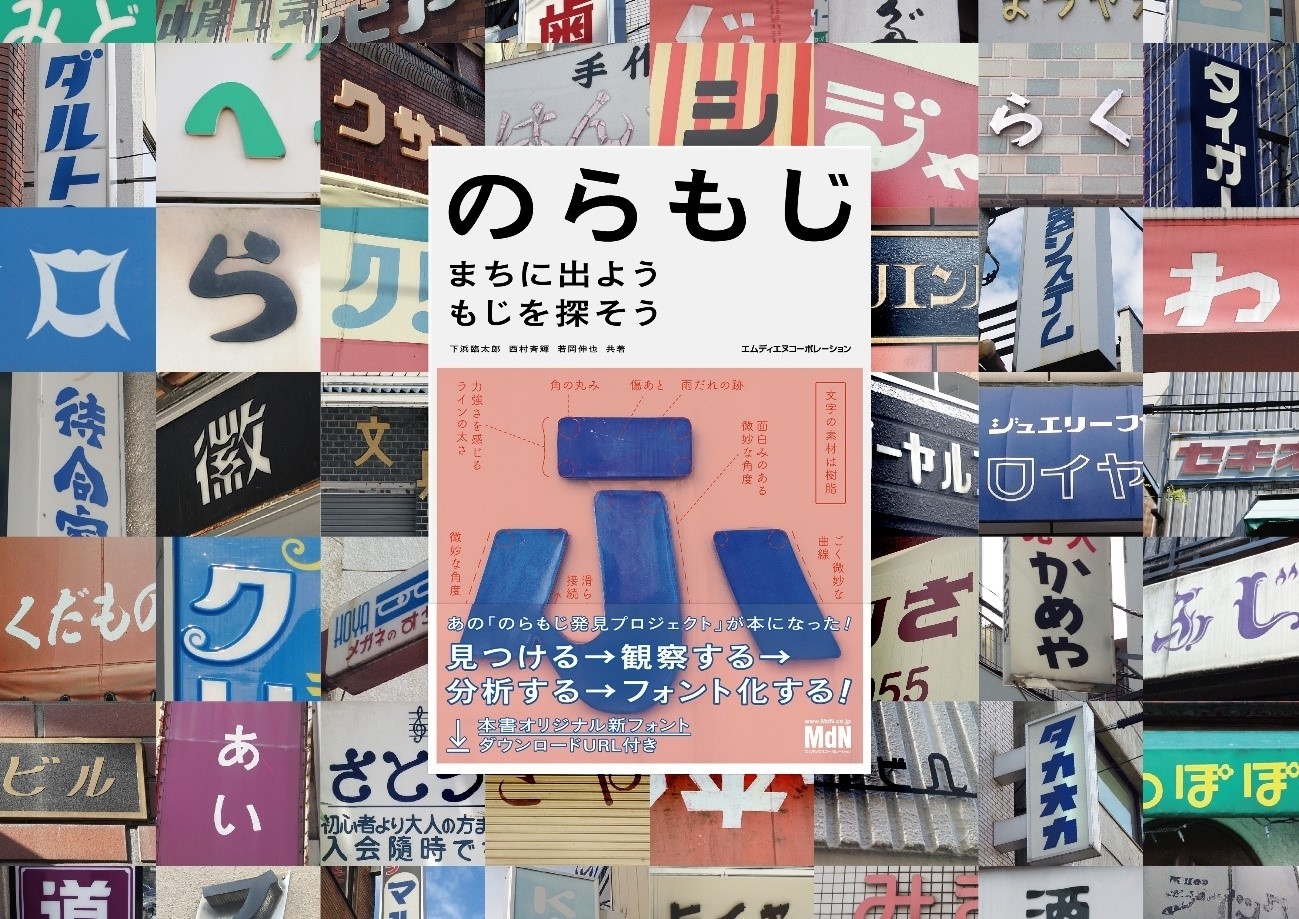
―― そもそも、若岡さんが看板にハマったきっかけは何だったんですか?
若岡:旅行先の養老の滝(岐阜県養老郡)の近くで見つけた看板ですね。「養老天命反転地」というアート施設に向かってる道中で、たまたま出会ったんです。
リフトに乗ってる女性のイラストが載ってる看板で、最初見た時は「ダサイ看板だな~」と。これを写真に収めて、友人に見せて笑ってやろうくらいだったんですよ。でも、家に帰って眺めてみたら、その独特の味わいに引き込まれてしまって。
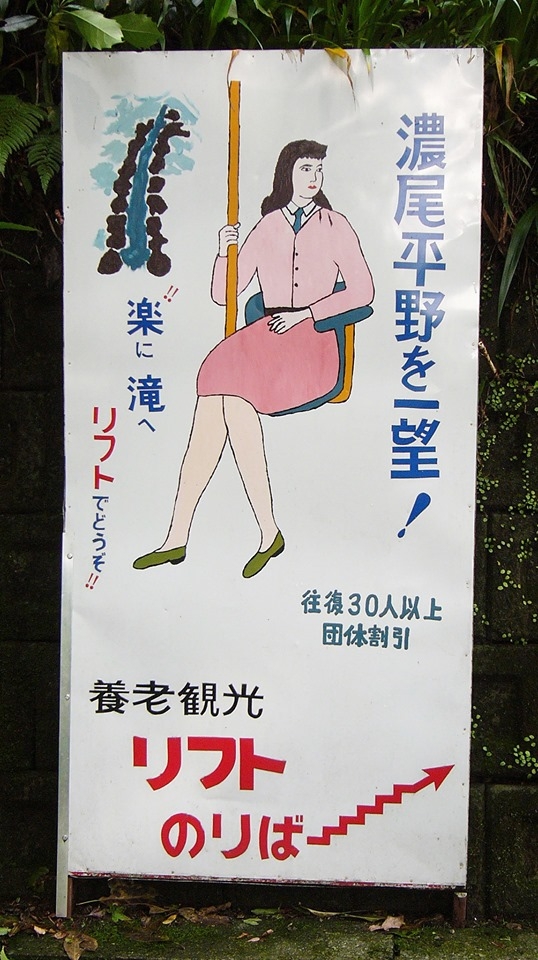
―― すいません、これは想像の斜め上を行ってました(笑)。
若岡:妙な余白とか、文字の形状も本当に凄い。「ここからもっとこの感覚を育ててみよう」となった、思い出深い1枚です。
―― 「のらもじ発見プロジェクト」もその感覚を基点としている、と。このプロジェクトを進めていくなかでの発見や感じたことなどはありましたでしょうか?
若岡:日本各地を巡って写真を撮っていくうちに、どこに行っても同じような文字の看板があるって気付きがあったんです。地域差が出そうなものなのに。看板職人さんがこぞって買うような教科書があったのでは?と僕は考えてます。
下浜:その仮説は知らんかったな(笑)。
若岡:古本屋で昔のレタリングの本とかを探すと、看板で見たことがあるような文字が結構出てくる。そういった書籍にインスパイアされて、当時の看板職人さんがあちこちで同じようなデザインを描いていた可能性はありますね。
西村:当時はネットが普及しておらず、業種間の繋がりでトレンドや価値観が伝播してたと思うので、同業種で似たような看板が多いのも、そういった事情があるのかもしれないですね。
下浜:地域差より業種差が出ているね。
―― 思いがけず、深い考察になりました(笑)。ちなみに、このプロジェクトを進めていく上でのこだわりを教えて下さい。
若岡:僕らが選んでいる看板の文字はフリーハンドで作られたものが多くて、「揺らぎ」みたいなのがしっかり残っているから、フォントを作るときにも「揺らぎ」を生かした形でやってますね。
下浜:文字を作っていく過程で、段々と整理されて割としっかりとデザインされた書体に近づいていくんですけど、整えすぎてないか?という感覚は大切にしています。太さや角度をシステマティックに組み立てて行きながらも、少し緩くした方が良いと感じるところは”戻す”作業をやったりしています。
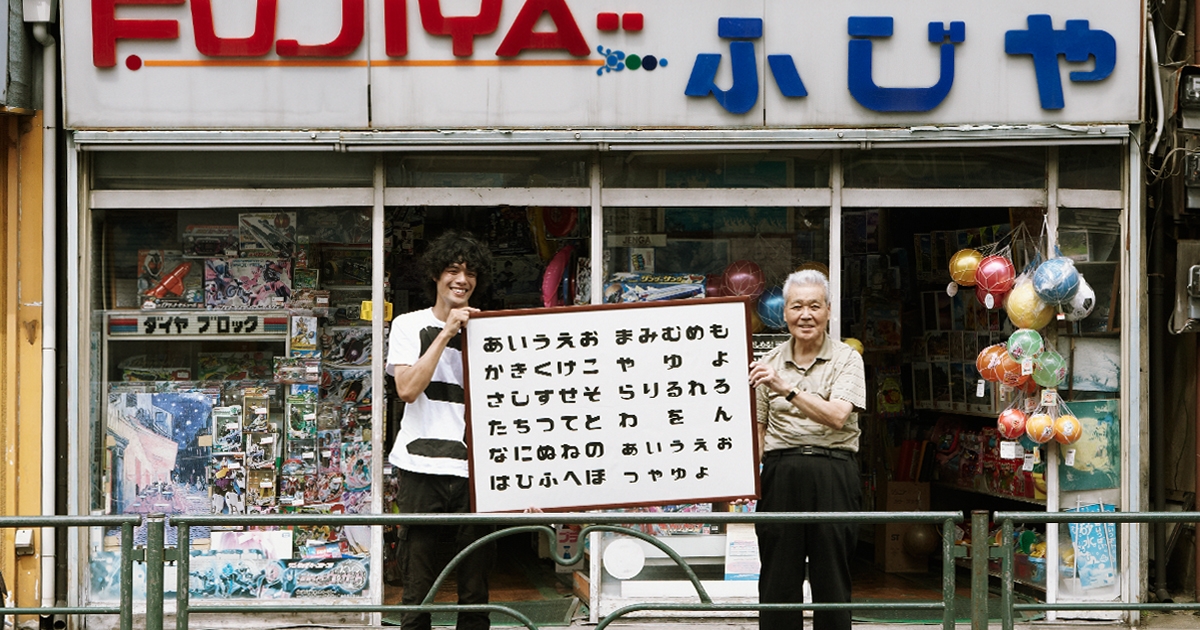
―― さじ加減は非常に難しいでしょうけど、その感覚を大切にされているのはよく分かります。
西村:あとは、このプロジェクトで得た収益をお店に確実に還元することですかね(※)。「お店の売上の足しにはならないだろうけど、看板をメンテナンスするくらいには使ってください」って言って渡すと、「こんなお金は受け取れない」って言われることが多いんですけどね。
(※)プロジェクトを通じて制作されたフォントは公式サイトからダウンロード可能で、ダウンロードの際に代金を支払うことで持ち主(のらもじの提供者)に還元される。
―― 実際に「のらもじ発見プロジェクト」で得た収益を元に、お店の看板が修復された例はあるんですか?
西村:ありますよ。ただ、経年変化の具合が味わい深かったのに、修復されたせいでその風合いが無くなってしまったこともありました(笑)。
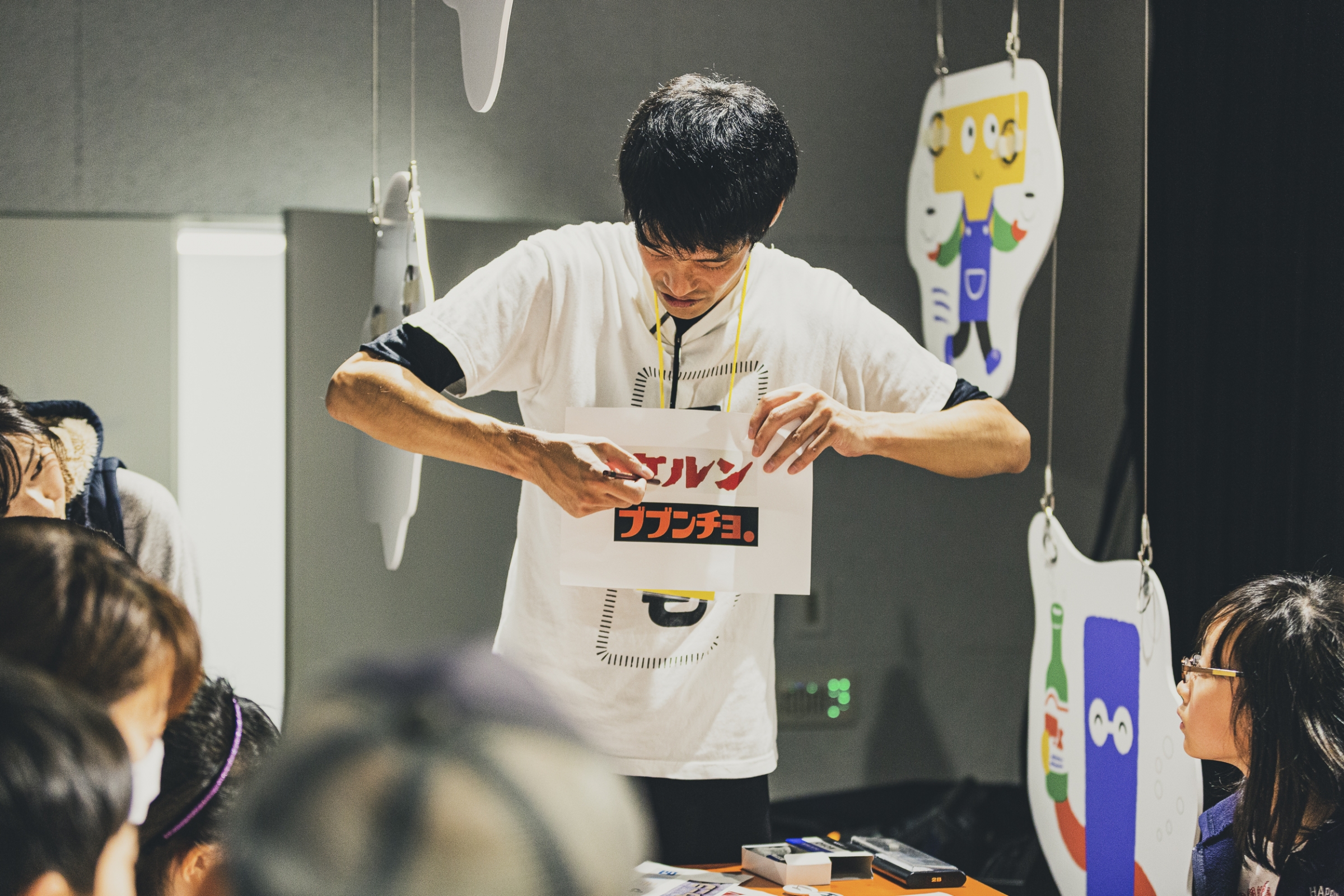


漫画家とお笑い芸人を目指した、その先に
―― 時計の針を少し戻して、皆さんのこれまでの歩みと文字の関わりをお聞き出来ればと思います。まずは、若岡さんからお願いします。
若岡:僕は幼い頃から文字が好きで、保育園児の頃、当時書いた絵とかに「中」の文字を必ず添えていた記憶があります(笑)。小学校の家庭科の時間にナップサックを作るとき、友達がアニメのキャラクターを選びがちだったなか、文字が書かれた方が格好良く見えて、アルファベットが書かれた生地を選んだりもしていました。
―― 期待を裏切らない、素晴らしいエピソードですね(笑)。そこまで文字がお好きで、ご自身がタイポグラフィに携わる未来は想像されなかった?
若岡:元々、漫画家になりたかったんです。実家が床屋だったので「ジャンプ」「マガジン」「サンデー」の最新号が常にあったんですけど、中学に入学する頃には少年マンガを既に読み飽きて、「ビックコミック」を読み始めました。「ビックコミック」は週刊マンガと書体が微妙に違っていたりして、どこか大人っぽさも感じてました。
そこから「ガロ」といったマニアックな方向にどんどん進んでいき、個人的にもマンガを大衆娯楽ではなく高尚なものにしたいという想いが芽生えてきて(笑)。でも、漫画家は自分にはやっていけないな、と。そこが人生の転換点です。
―― デザイナーになられた今でも文字はお好きですか?
若岡:今でも文字は好きです。文字の歴史も好きで、僕らがいま綺麗と思っている文字の形の源流はどこにあるのかを丹念に調べていくと、王羲之(Wang Xizhi, 303-361)に行きつくんです。彼の書が凄いとなっていった流れには、人間の生きるヒントが入っているな、と深く感じ入ったり。そういえば、僕の今の名刺は、藤田さんが制作された「筑紫Q明朝」で統一されてます(笑)。
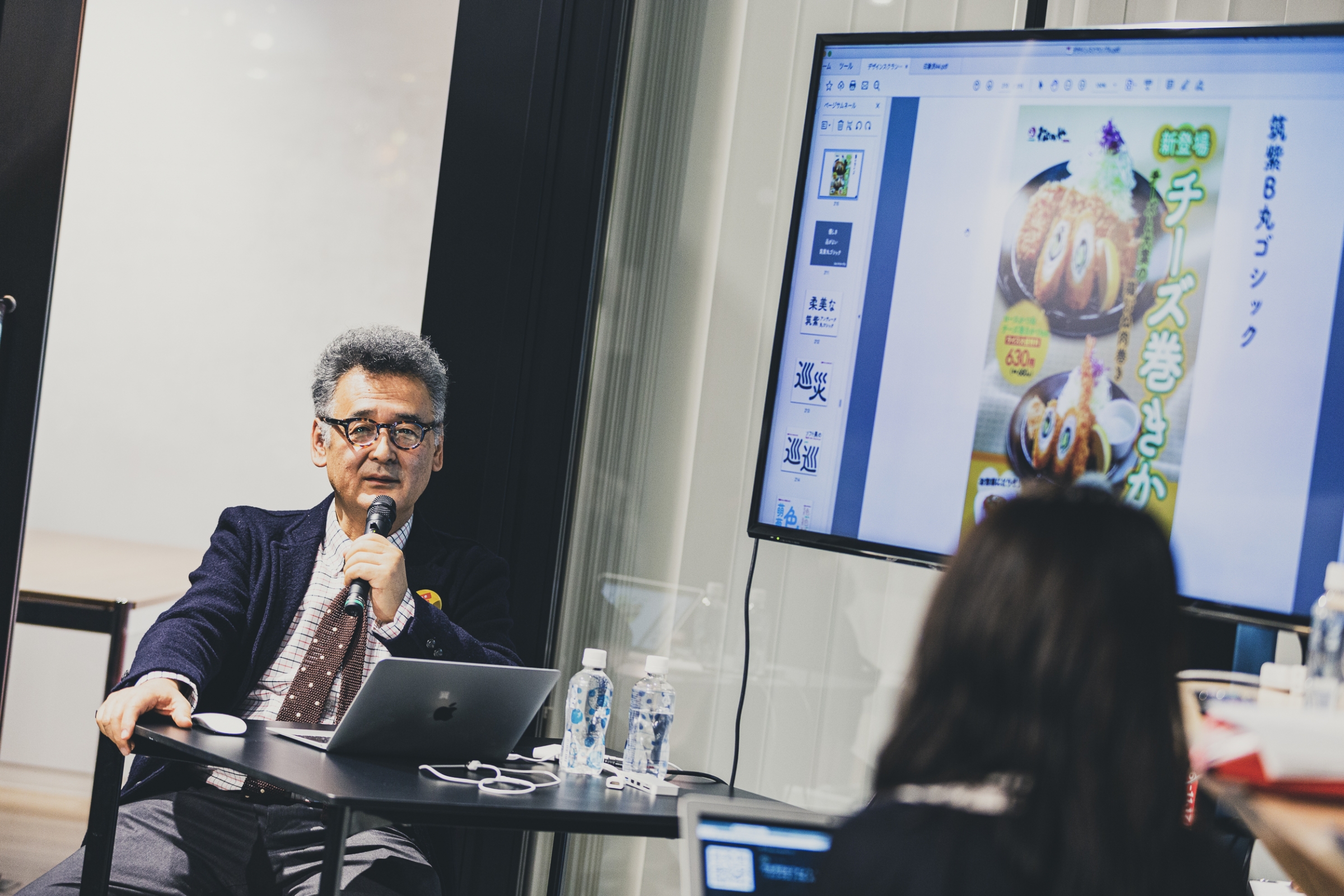
―― ありがとうございます!下浜さんは、これまで文字とどのように関わってこられましたか?
下浜:僕が文字に対して最も意識的になった原体験は、小学生の頃に板書をノートに取ったときですね。板書で大事な部分とそうでない部分を文字の大きさで差を出すことは皆さんもやると思うんですが、自分の場合はそこから更に太さを変えたり、袋文字にしたり、太くして中を塗ったりして。
他にも、例えば日本史でペリー来航から開国の場面は、文字にも西洋的な要素を入れたいなとか(笑)。勝手に色々凝った文字でノートを取っていたのですが、いま思えばそれこそまさにタイポグラフィだったのかもしれません。
―― 面白い!先日の東洋経済新報社様での取材で、装丁担当の橋爪さんにお話を伺った際にも、授業中にノートの構成にこだわり過ぎて先生によく怒られてたけど、そういった延長線上に今の装丁家の仕事が有るって仰ってて、鳥肌が立った記憶があります。
下浜:僕の場合は先生に褒められたのでよかったです(笑)。「内容は分かってないけど、ノートは良いね」と。よく考えると、文字だけで工夫しなくても、マーカーとか使えばよかったんですが、マーカーを使っていなかったせいで鉛筆だけでノートを取っていました。その結果「色」の力に頼らず、文字のフォルムにこだわることになったのかもしれません。
―― 下浜さんは大手の広告代理店に入社(現在は独立)されてますけど、学生時代から広告代理店志望だったんですか?
下浜:実は、僕も小学生のときは漫画家になりたかったんです(笑)。それで、手始めに小学生の頃のクラスで漫画雑誌を創刊したんですけど、漫画を描くことより漫画雑誌名の題字のデザインとか、作品のタイトルデザインの方が楽しくなってしまって…。雑誌そのもののデザインが楽しかったこともあって、クラスの他の友達のメンバーを更に誘って無理やり漫画を描かせてました(笑)。
自分で漫画を描きたいと思って始めた割には、雑誌を成立させる方に興味がスライドしていってしまった。企画者だったり、アートディレクターとして現在働いている源流はそこにあると感じてますし、「のらもじ発見プロジェクト」での役割もそういったものになってます。
―― なるほど。西村さんは如何でしょう?
西村:僕は、2人のような色っぽいエピソードはあまりありません(笑)。今思い出すと、学生時代に実家にあったワープロの外字作成機能を活用してドットで絵を作って、当時ハマってたファミコンのキャラクターや文字を再現してニヤニヤしてました。高校に入ってパソコンを触り始め、デザインツールのひとつの機能としてフォントを使ってたりしてました。
―― 高校卒業後、吉本興業のタレント養成所(NSC)に入校されますよね?
西村:そうです。当時は「俺はダウンタウンになる!」と強く思ってました。『ごっつええ感じ』はVHSのテープが擦り切れるくらい見てましたね。
高校を卒業して念願のNSCに入って、何回かネタ合わせはしたものの、思ってたよりも楽しくないな、と。結局3回コンビ組んだんですけど全て解散して、NSCを無事卒業しました(笑)。
ちなみに、NSCの終盤はコンビを組んでなくて暇だったので、電機屋で働いてたんです。1年間、ゲームを売ったりテレビを売ったりして実績も出して、それなりに充実感はあったんですけど、年末の忙しい時期に「あれ?この仕事は他人が作ったものをお客様に渡しているだけだ」と思ってしまって。その日のうちに辞めますって上司に伝えて辞めました。
―― 早い(笑)。その後、美大入学という人生の大きな転換点を迎えるわけですね。
西村:趣味でインターネットをよく見ていて、自分でホームページを作ってたりとかしてたので、次はそんなことを本格的にやってみたいな、と。「芸人になる」という1個目の夢が破れたので、2個目行くかっていう感じで美大に入学しました。
―― 三者三様で本当に興味深い!今度は未来のお話を是非お聞きしたいです。皆さんは「のらもじ発見プロジェクト」を今後どのように発展させていきたいとお考えでしょうか?
下浜:今、自分が力を入れているのはワークショップです。この活動は、若岡が気になる看板の文字を見つけて、写真を撮って鑑賞するというところからスタートしましたが、その後は活動を気に入った方々も「のらもじ」を発見したり、見つけた「のらもじ」をSNSで共有するというかたちで育っていきました。
次の段階では、みんなで街を歩いて看板や文字が「今、目の前にある!」と現実感を共有したり、文字を自分の手でレタリングする体験を通じて、文字が自分に近づいてくる感覚を味わってもらいたいです。ブラウザ越しに文字を見ていた自分が作る側に回る体験ですね。文字というものはこうやって作るものなんだな、ということを身体的に感じることができます。そういったワークショップは、これからも長く続けていきたいと考えてます。
西村:最近は、SNSでも「#のらもじ」ハッシュタグがよく使われるようになりました。こちらがあおるようなことも特にしていないのに、街中で気になる文字や看板を見つけたら写真を撮ってインスタグラムにハッシュタグを付けて投稿してくれる方が増えましたね。デザイナーじゃない方々にも文字に興味を持ってもらい、SNSでその流れが加速しているのは良いことだなと感じてます。僕らが展覧会に出品したり展示会に出展したりせずとも、こういった動きが自然に広がっていくのが良いなと思ってます。
―― 若岡さんはどうお考えですか?
若岡:僕は、これからも好きな看板をただ写真に撮って鑑賞するだけです。誰かにそんなに理解してもらわなくても良いかな、と思っている趣味なので。
一同:(笑)

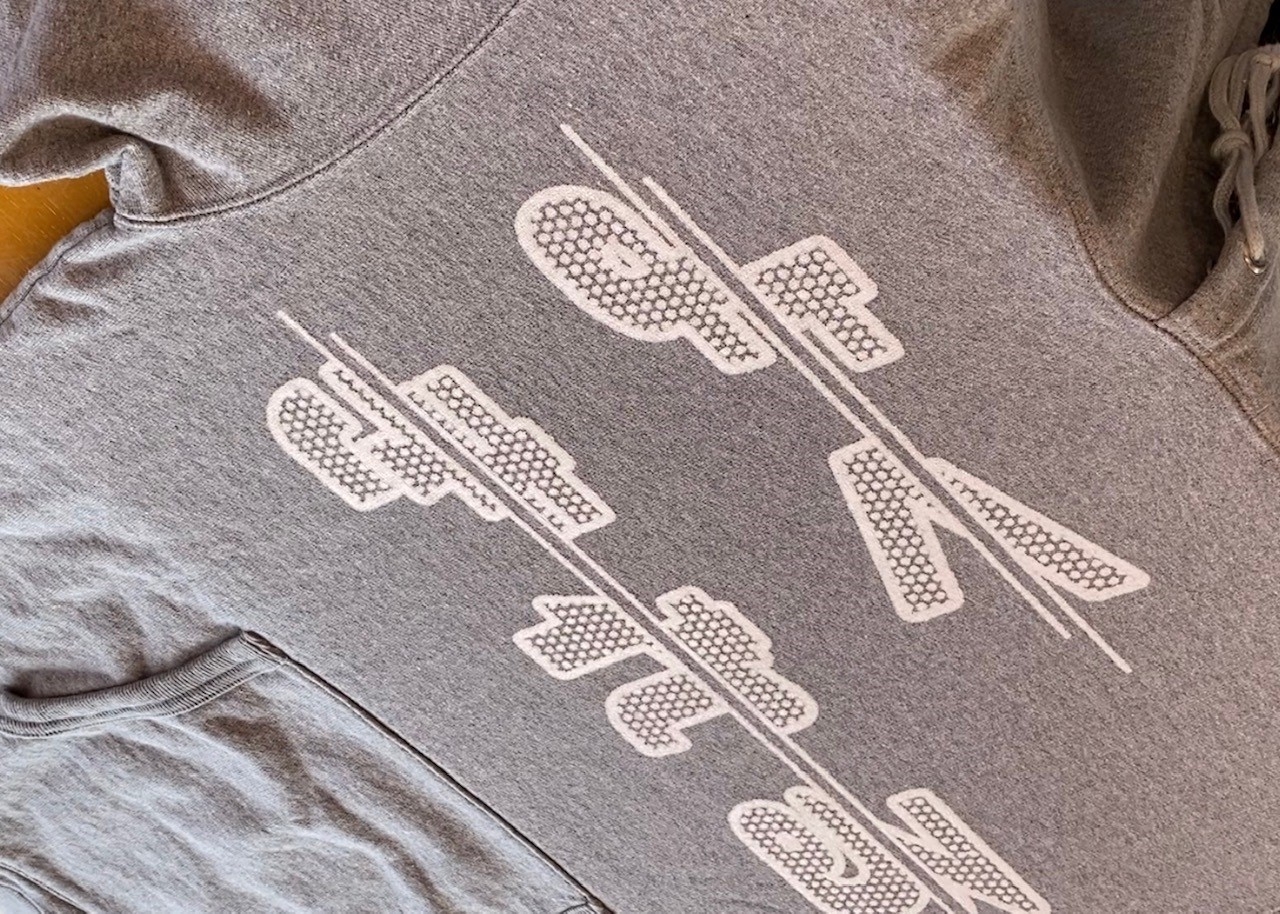
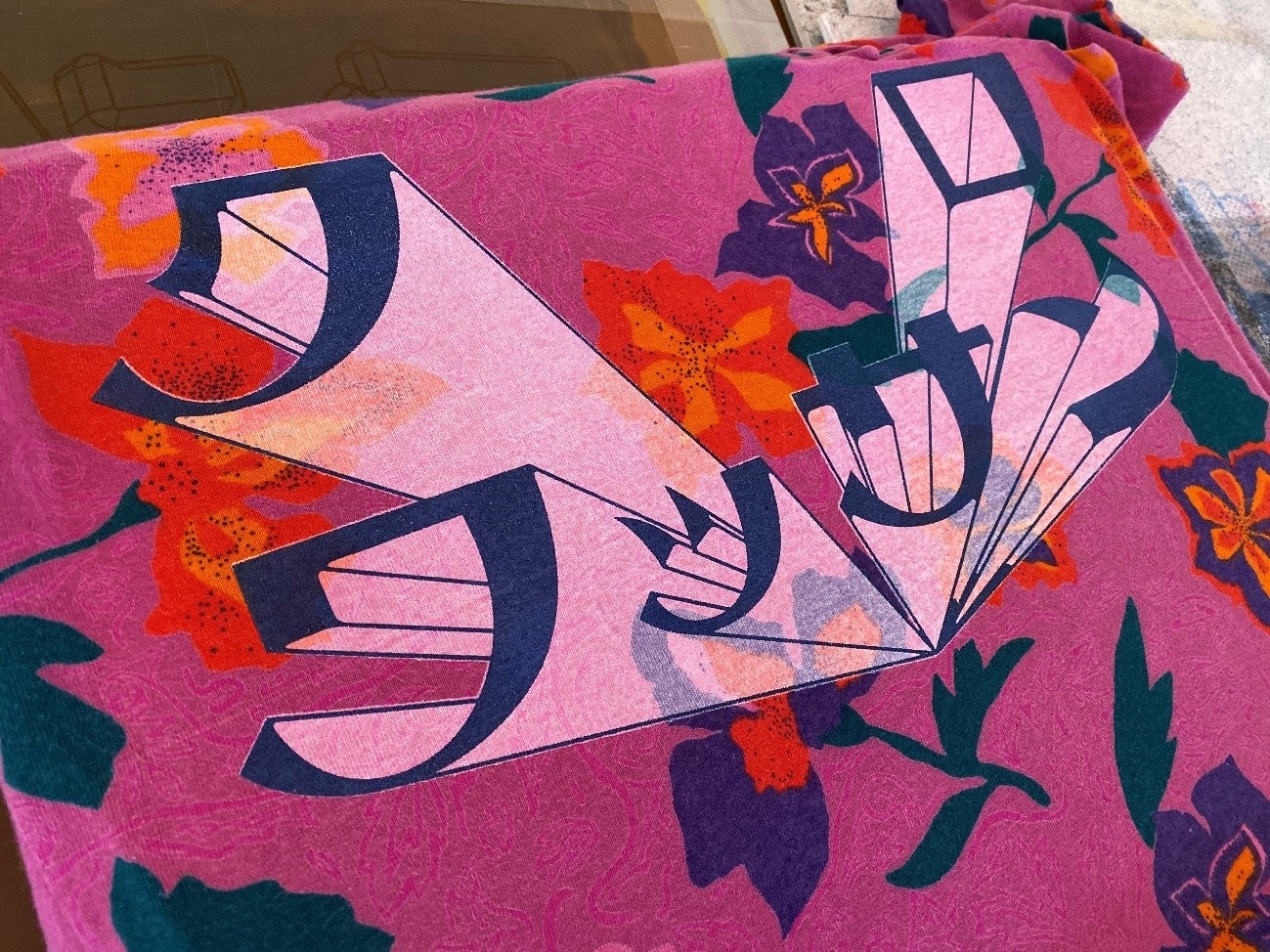
三者三様の感性が力強く結びついて
―― 他人に理解されるかされないかはさておき(笑)、端から見るとご自身の好きなことをとことん追求されていて、素敵な人生を歩まれているなと思います。趣味と仕事の境目がないようにも見受けられますが、若岡さんご本人としてはその辺りをどのようにお考えですか?
若岡:趣味を仕事に繋げようとは思うけど、仕事を趣味とはあまり思えないですね。
―― その感覚を言語化出来ますでしょうか?
若岡:仕事でデザインをする感覚と、趣味である古道具やうつわを愛でる感覚には差があるように感じています。グラフィックデザインは記号的なものを多用するのですが、古道具やうつわは素材そのものに魅力があって、記号的な美を拒否するようなところがあります。自分の仕事ではそれを埋めるように努力しているのですが、なかなか思うようにいかず…。
―― グラフィックデザイナーとして幾許かのモヤモヤを感じつつも、日々邁進されているわけですね。そんな若岡さんのインスピレーションの源は?
若岡:看板以外にも昔から散歩が好きで、最近は「ドラゴンクエストウォーク」にハマってます。歩いたことで何かが起きるっていう仕組みが良いな、と。基本的には歩きながら何も考えず、こんなところにこんなものがあったんだっていう気付きを大切にしてますね。
ジョルジョ・モランディ(Giorgio Morandi, 1890-1964)というイタリアの画家に面白いエピソードがあります。彼のパトロンの女性がタヒチに旅行に行ってきて「今までの人生のなかで一番美しい夕日を見た」とモランディに言ったら、彼は「僕はそれよりも美しい夕日を知ってるよ」と返したらしいんです。「どこの夕日なの?」って彼女が夢中で答えを引き出そうとしたら、「それは、僕の家の裏の坂から見える夕日だよ」って。そんな境地に行きたいな、と常々思ってます。
―― 何とも、若岡さんらしい感性ですね(笑)。西村さんはどうですか?
西村:僕は今年結婚しまして、最近は妻が行きたい和菓子屋さんやカフェを巡ってます。京都という土地柄もあると思うんですけど、日本家屋をモダンにリノベーションしている店とかも多くて、ぷらぷらとカフェ巡りするだけでも凄く面白くて。今まで見えていなかった世界を見ている感覚が有りますね。
東京に住んでいる頃は新しさって普遍的な価値だと思ってたんですが、京都のまわりの人は新しいものにあまり関心を示さないんです。これにはショックを受けました。それよりも同じものをより長く提供することに価値を置いてる人がいたり、お金儲けをするよりも伝統を守ることを大事にする人がいたり、自分が見てきた東京とは真逆の世界で、日々カルチャーショックを受けてます(笑)。
―― 「新しいって普遍的な価値じゃない」って面白い観点だし、京都に住むようになったからこそ見えてきた景色ですね。最後、下浜さんにもインスピレーションの源を是非お聞きしたいです。
下浜:僕は最近は、打ち込みで音楽を作るのが趣味です。30秒~1分くらいの割と短めのループするトラックを作ってます。
―― 「ループ」って、クラブミュージックのイメージですか?
下浜:そうです。クラブミュージックはずっと同じリズムを繰り返すことで、だんだん気持ちがトランス状態になって気持ち良く踊れるという構成になっているんですけど、僕は作曲初心者なので、それを部分的に作ってる感じです。
個人的にすごく興味があるのが、1980~90年代に日本国内で流行した曲を、今踊れる曲にするという流れがあること。バブル絶頂期の、日本の都市のキラキラしたイメージが音楽にも表れていたと思うのですが、あのキラキラが幻想になった今、敢えてそれを引用して再構築する流れがあります。
当時のショッピングモールなどの商業施設で、延々とループ再生されていたフュージョン系の曲なんかはキラキラした消費の典型だと考えてます。テクノロジー的にはシンセサイザーがたくさん使われ始めていた頃なので、その頃のシンセサイザーを使っただけで80年代感が出るということに注目して楽曲を作っているミュージシャンもいます。音色にも時代性が有るんだな…ということは、最近すごく気付かされたことですね。
―― 当時のジャパニーズ・シティポップを海外の方がリミックスして、それが日本に逆輸入されるというムーブメントも今まさに起こってますよね。
下浜:今、流れてないからこそ新しいという感覚ですよね。自分も知らない時代の作品なのに、懐かしい。でも、新しい。それは面白い感覚です。元々、クラブカルチャーではリミックスや引用が当たり前だったりしますし、自分の作った楽曲でなくでもそれを繋いでフロアを盛り上げます。
「のらもじ発見プロジェクト」も、ある角度から見ると”リミックス”した側面もあって。看板職人さんが書いた文字(ソース)をサンプリングして、現代にフィットするようなデジタルフォントに再構築する行為はまさに”リミックス”だと捉えています。
前時代的なものを発掘して再構築するという手法に興味がある自分と、看板文字に対して骨董的な魅力を見出した若岡、ネットのリテラシーをしっかり持ってリミックスしたものを共有する西村、3人の感性が偶然結びついて、「のらもじ発見プロジェクト」があるという感じかもしれないですね。
―― 今日お話を伺って、交わりそうにない各人の感性が絶妙に交わりあって「のらもじ発見プロジェクト」が見事に進行しているのが良く分かりました。本日は貴重なお話をありがとうございました!
After Recording 取材を終えて…
「昔から、旅行に行っても風景じゃなく看板ばっかり撮ってた」。
元々は、若岡さんの個人的な趣味だった看板鑑賞。これが、下浜さんのディレクション、西村さんのデジタル的な感性の下で一気に羽ばたき、今ここまでのうねりを起こしていることに、(若岡さんと同じく看板鑑賞が趣味の)当方は興味を覚えずにはいられませんでした。
「もじFes.」の会場でも、トークセッション&ワークショップは大盛況。若い女性や子供たちも多く参加していたのを見て、時代を捉えたコンテンツという意識を強く持ち、是非お話を聞きたい!と会場で下浜さんに直談判、今回の取材と相成りました。取材を通じて、特に学生時代に培った三者三様の感性の融合がこのプロジェクトをしっかりと支えているということが、言葉の本当の意味で分かった次第です。
なお、「のらもじ まちに出よう もじを探そう」には、宇川直宏氏(映像作家、グラフィックデザイナー)が以下のあとがきを寄せていました。
決定的に新しいと思った点が、柳宗悦が大正時代に提唱した「民藝運動」の概念を意識的に継承している点です。民藝運動とは、日常的な暮らしの中で名もなき職人によって培われてきた美意識や技巧を、「美術」ではなく「民藝」と名付け、アノニマスな「手仕事」を愛でる生活文化運動ですよね。
匿名性によって打ち出されているクリエイティブを、純粋行為として評価している。このように「手仕事」の歴史と伝統をデータとしてアーカイヴィングしていく「のらもじ」の側面を、世紀をまたいで民藝運動と読み替えている、その概念構築も素晴らしいと思いました。
(pp.154 解説「既にそこに生息していた野生の民藝」より)
偶然に近い形で始まった「タイポグラフィにおける民藝運動」が、今後も継続し、一層発展していくことを願ってやみません。
ちなみに、お三方への取材後、当方も看板の見え方が変わってきました。「ゆがみがあったり、足りない部分があったり、いびつなものに興味がある」という若岡さんの言葉に引っ張られて、独特の雰囲気を醸し出す看板ばかりに目が行く自分がいます。改めて、看板って面白い!

取材日:2019年12月3日
写真=のらもじ発見プロジェクト、安藤貴文
